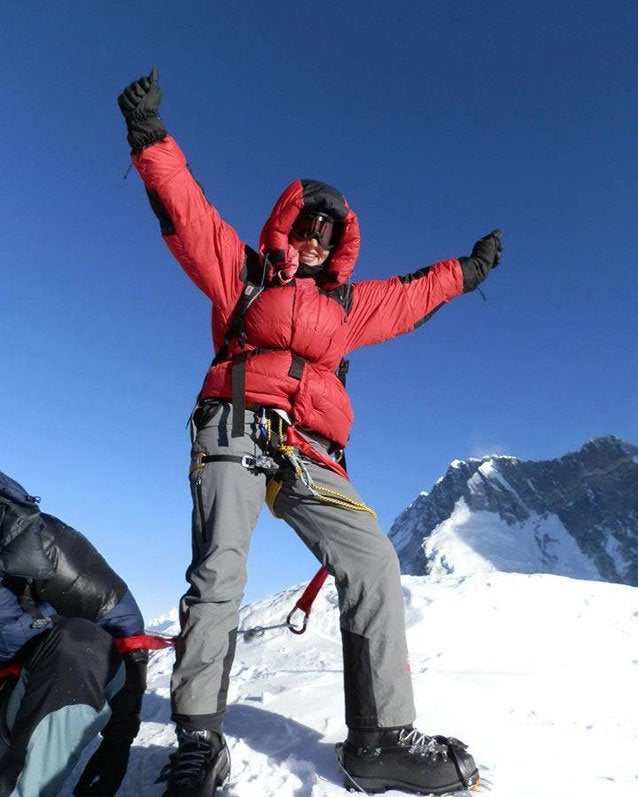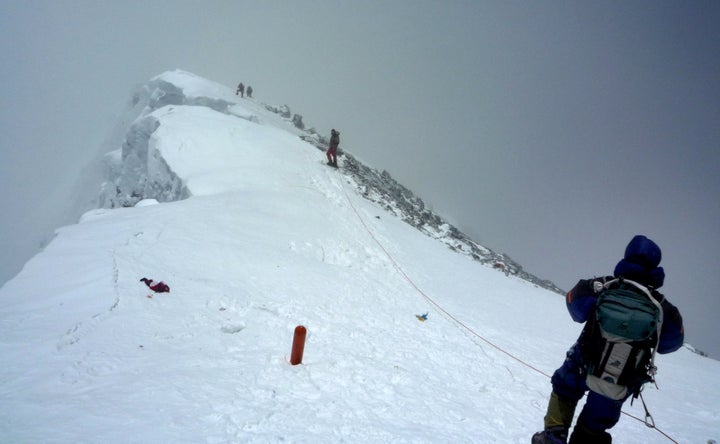
After two years in which no human summited Mount Everest, climbers have returned to the world’s highest peak. But with the stories of triumph, the return to Everest brings stories of tragedy.
Two climbers died on their way down from the 29,035-foot mountain on Friday and Saturday. One was a Dutchman who had dreamed of climbing Everest since he was a child, and the other an Australian university lecturer and accomplished climber.
Representatives of the climbing outfit they were with, Seven Summit Treks, said that it appeared they suffered from altitude sickness.
The two deaths are the first confirmed fatalities on Everest since 2015, when a 7.8-magnitude earthquake caused an avalanche that killed 19 people at base camp. In 2014, an avalanche killed 16 Sherpa guides. Climbing season was canceled after both incidents.
Earlier in the week, two people reportedly died on nearby mountains in the Himalayas. Two Indian climbers were reported missing on Everest on Sunday, according to The Associated Press.
Eric Arnold, 35, the Dutch climber, died just hours after returning from the summit to Camp IV, according to Seven Summit Treks manager Pasang Phurba Sherpa. Arnold had been feeling weak and suffering from frostbite, and told fellow climbers "my body has no energy left" before dying in his sleep, according to ANP.
It was Arnold's fifth attempt to summit. Attempts in 2014 and 2015 were thwarted by the natural disasters; he barely survived the 2015 earthquake, according to the Himalayan Times.
His Twitter account, which said he was from Rotterdam, announced that he had made the summit on Friday.
Following his death, Arnold's website showed a picture of him and the words, "In Memoriam."
Arnold told RTV Rijnmond that he had dreamed of climbing Everest since he was a child. "I used to have a poster of Mount Everest above my bed," he said.
He also acknowledged the danger of climbing, especially the descent.
"Two-thirds of the accidents happen on the way down," he said. "If you get euphoric and think, 'I have reached my goal,' the most dangerous part is still ahead of you."
A day after Arnold’s death, Dr. Maria Strydom of Melbourne, Australia, died while descending from Camp IV to III, of apparent altitude sickness. The university where the 34-year-old worked confirmed the news.
"After reaching the summit yesterday she said she was feeling very weak and suffering from a loss of energy … signs of altitude sickness," Seven Summit Treks' Phurba said.
A lecturer at Monash University, Strydom died with her husband at her side. The two had been traveling together in Nepal, according to The Sydney Morning Herald. They had hoped to climb the seven summits, the highest peaks of the seven continents, the AP reported.

"Maria was a valued and popular member of the department of banking and finance at Monash University," her colleague Philip Gray told ABC News. "More than that, she was a much-loved friend to many and inspiration to all."
Originally from South Africa, Strydom was an accomplished climber, having summited Denali in Alaska, Aconcagua in Argentina, Mount Ararat in Turkey and Mount Kilimanjaro in Tanzania. Part of her inspiration was to prove that vegans, which both she and her husband were, are physically capable of great endeavors.

"It seems that people have this warped idea of vegans being malnourished and weak," Strydom said in a post on the university’s website. "By climbing the seven summits we want to prove that vegans can do anything and more."
It was expected to take several days to remove the bodies of both Strydom and Arnold from the mountain, Phurba said.
Also on Saturday, a 45-year-old woman from Norway was helped down the mountain by Sherpas after being struck with snow blindness.

On May 11, a group of Nepalese guides made it up the mountain, the first to lay footprints at the top of the world after the natural disasters ended climbing seasons in 2014 and 2015.
Around 30 climbers have recently fallen ill or suffered frostbite near the Everest summit, according to the AP.
Despite the immense risk on Everest, year after year, climbers are drawn to the mountain for a chance at the immense reward. On the day that Strydom died, 19-year-old Alyssa Azar became the youngest Australian to summit. Lhakpa Sherpa, a 42-year-old who works at a Connecticut 7-Eleven, broke her own Everest record on Friday with her seventh summit.
Everest climbing season typically runs for about two months in the spring, when the conditions permit teams to make a bid for the summit. Since May 11, more than 330 people have climbed Everest from the Nepali side, and several have climbed from the Tibetan side.
This article has been updated with reports of the missing Indian climbers.

